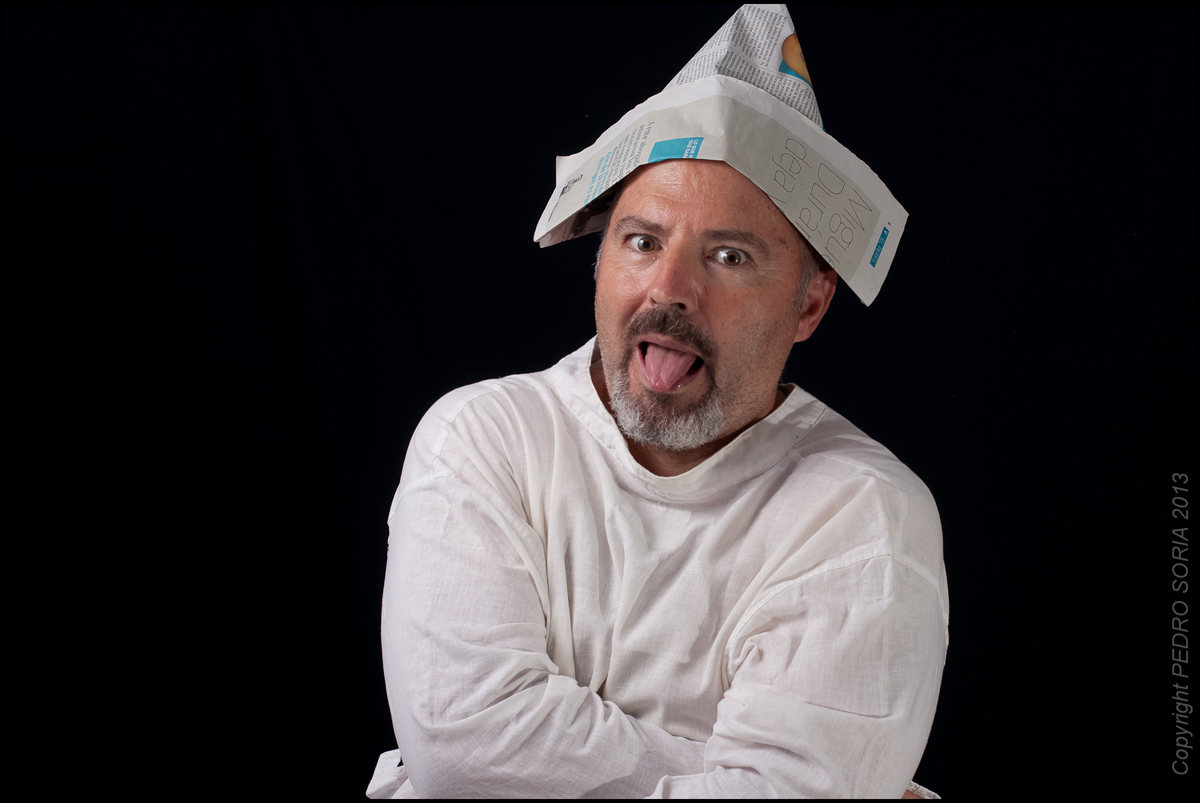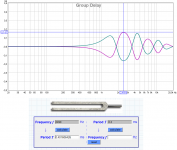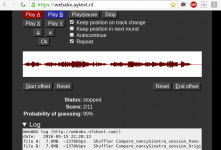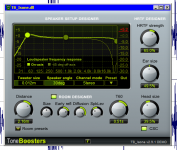It seems like a binaural head mic would be the best way to actually measure the high frequency comb filter effects of center images. You could move the head from side to side a bit, and/or rotate it some, and see what happens with the cancellations. Then using a phase shuffler with two delays, so the cancellations caused by a single shuffler phase delay could be largely filled in my the second shuffler delay, that would have cancellations at different frequencies. A strategic ratio of the two delays might be 1:1.4 or 1.62. That way, the integral multiple cancellations might not double up as much, if at all (I'm too lazy to do the math, but those ratios work with harmonics). Am I getting this right, or did someone say this screws up the in-between images?
Yep I'm hoping that Pano will do this for us! I mean, it would be best to do in an anechoic environment. Too bad none of us have a full acoustic measurement facility at our disposal...
To my ears, anything that electronically mixes in short delays has sounded very bad (as a blanket treatment).
Using a dummy head and 2 mics should be good for certain things, such as measuring the comb filtering that is the subject of this thread - and perhaps other things related to speakers in a room. A single point mic is not really how we hear, so its results have to be taken with that in mind. However, I don't think I'd use a dummy head and pair of mics for designing crossovers. 🙂
It's an interesting subject, for sure.
It's an interesting subject, for sure.
The paper I linked earlier by Professor Edgar Choueiri shows a solution, which gets complicated fast, that seems to be based entirely on dummy head measurements.
For optimal listening even head tracking is involved to ensure good results. As well as head measurements to ensure a good fit of the algorithms used.
They are currently working on creating multiple listener sweets pots and it's definitely an interesting technology and development.
I'm not sure I want to go that route, but to be able to optimize what we've got has my complete attention.
I'm not sure what you are proposing Bob, I've experimented with introducing delayed copies into the audio stream. But every time we do that sort of stuff we add new comb problems so I abandoned that idea. Just look at the pulses presented in that Choueiri paper to see the complexity needed to get an even frequency response at the ears.
For optimal listening even head tracking is involved to ensure good results. As well as head measurements to ensure a good fit of the algorithms used.
They are currently working on creating multiple listener sweets pots and it's definitely an interesting technology and development.
I'm not sure I want to go that route, but to be able to optimize what we've got has my complete attention.
I'm not sure what you are proposing Bob, I've experimented with introducing delayed copies into the audio stream. But every time we do that sort of stuff we add new comb problems so I abandoned that idea. Just look at the pulses presented in that Choueiri paper to see the complexity needed to get an even frequency response at the ears.
Last edited:
Room reflections often destroy the frequency response by the time the sound gets to your ears, perhaps mostly due to time delayed room reflections. The thing that minimizes these comb filter cancellations is that there are usually many reflection paths, each with different delay times, and therefore cancellation frequencies. Where one path creates a cancellation, other paths having random and different delay times will often fill in the cancellations by the time the sound gets to our ear.
I'm suggesting that the same theory could apply to the much shorter delay times involved with phase delay in the high frequencies, where we are trying to deal with cancellations of center image frequencies due to us having two ears.
The basic shuffler, if I understand correctly, puts in a single (phase) delay, but that delay causes cancellations that we don't want. So what if we introduce a second delay that causes cancellations at different frequencies, and thereby fills in the cancellations of the first delay?
Since cancellations from a single delay will cause not just one, but integral multiple frequency cancellations (usually many), the second delay should be strategically chosen, such that there won't be double ups of cancellations of the integral multiple cancellations. I'm guessing that ratios of 1.4 or 1.62 might be the magic numbers (they are with harmonics), but I could be wrong about that. Experimentation might be necessary.
But I wonder if this technique might amount to effective decorrelation, and is that a good thing or a bad thing (?) Does it weaken the in-between images? If it's a bad thing, then I wonder if it would be a good thing if L+R is first extracted from the stereo signal, processed in this way, and then re-mixed back in with the stereo pair after it's been run through a stereo matrix (L-XR circuit - which would largely cancel the L+R part of the signal. So when added all back together, the balance of the L+R and L and R would be pretty much back where they was (by manual amplitude adjustment), but now the center image would have slight decorrelation, relative to the signals that are mostly L and R, and perhaps thereby sound more solid and acoustically flat in the higher frequencies. I hope this makes sense. It's not easy to put into words. When I tell this to my friends at the bar while drinking beers, they look at me funny. Women walk away. Could I be wrong?
I'm suggesting that the same theory could apply to the much shorter delay times involved with phase delay in the high frequencies, where we are trying to deal with cancellations of center image frequencies due to us having two ears.
The basic shuffler, if I understand correctly, puts in a single (phase) delay, but that delay causes cancellations that we don't want. So what if we introduce a second delay that causes cancellations at different frequencies, and thereby fills in the cancellations of the first delay?
Since cancellations from a single delay will cause not just one, but integral multiple frequency cancellations (usually many), the second delay should be strategically chosen, such that there won't be double ups of cancellations of the integral multiple cancellations. I'm guessing that ratios of 1.4 or 1.62 might be the magic numbers (they are with harmonics), but I could be wrong about that. Experimentation might be necessary.
But I wonder if this technique might amount to effective decorrelation, and is that a good thing or a bad thing (?) Does it weaken the in-between images? If it's a bad thing, then I wonder if it would be a good thing if L+R is first extracted from the stereo signal, processed in this way, and then re-mixed back in with the stereo pair after it's been run through a stereo matrix (L-XR circuit - which would largely cancel the L+R part of the signal. So when added all back together, the balance of the L+R and L and R would be pretty much back where they was (by manual amplitude adjustment), but now the center image would have slight decorrelation, relative to the signals that are mostly L and R, and perhaps thereby sound more solid and acoustically flat in the higher frequencies. I hope this makes sense. It's not easy to put into words. When I tell this to my friends at the bar while drinking beers, they look at me funny. Women walk away. Could I be wrong?
The comb filtering that results from room reflections into a microphone is not analogous to comb filtering introduced into the electrical signal prior to being reproduced by a speaker; the latter should not be used to emulate the former.
But I wonder if this technique might amount to effective decorrelation...
Now i realize... Yes, this might be the word, and the reason why i don't understand anything about what is being discussed in this file: have no *** idea about that magic word, "decorrelation" is all about...
Will anybody help and elaborate somewhat on this?

Is it possible that reflections, apart from filling imaginary deeps, also decorrelate things for whatever this might be worth doing?🙄
Last edited:
I hope this makes sense. It's not easy to put into words. When I tell this to my friends at the bar while drinking beers, they look at me funny. Women walk away. Could I be wrong?
Lol, it made some sense to me, should I be worried? 🙂
Ha! I will try.have no *** idea about that magic word, "decorrelation" is all about...
Will anybody help and elaborate somewhat on this?
Imagine you have an audio file of pink noise. It's a stereo (2 channel) file. But it's mono pink noise. Both tracks are identical. That is correlated. What if you have random pink noise on the left that is not related to the noise on the right? No correlation between the 2 channels of pink noise. Phase and amplitude are not related between the channels. It's decorrelated. Flipping one channel's polarity and mixing the two channels together would not cancel the signal.
In reflections, image your speaker is next to a large glass wall. The reflections off that wall are likely to be highly correlated with the direct sound. They will be a later mimic of that sound. This can be easy to see in impulse measurements, you'll see a second impulse that looks very similar to the initial impulse. It's a clean echo. What if the wall were curved and broken up by blocks and shapes and textures? Still hard, still reflective, but the reflection is broken up and scattered around. It's decorrelated with the direct sound. These refections are diffuse and random. De-correlated.
I think you are missing how the shuffler works. The original shuffler as proposed in the paper linked at the top of the thread uses short echoes that alternate in phase. That results in phase flips above about 900 Hz which prevent the comb filtering caused by the ears and head. If the signals are not in phase, they won't cancel when mixed.The basic shuffler, if I understand correctly, puts in a single (phase) delay, but that delay causes cancellations that we don't want. So what if we introduce a second delay that causes cancellations at different frequencies, and thereby fills in the cancellations of the first delay?
The second type of shuffler, as made in the rePhase software, shuffles phase only, there are no impulse echoes. The points at which the phase angles spread are chosen to correspond to the frequencies that comb and cancel in a typical stereo set up. The main frequency being about 1900 Hz. If the signals coming from the 2 speakers are not in phase at that frequency, they can not comb and cancel. This does not change the frequency response, summed or or separate. It simply prevents the comb filtering and corresponding dips and bumps in frequency response that comb filtering causes.
Ha! I will try.
Imagine you have an audio file of pink noise. It's a stereo (2 channel) file. But it's mono pink noise. Both tracks are identical. That is correlated. What if you have random pink noise on the left that is not related to the noise on the right? No correlation between the 2 channels of pink noise. Phase and amplitude are not related between the channels. It's decorrelated. Flipping one channel's polarity and mixing the two channels together would not cancel the signal.
In reflections, image your speaker is next to a large glass wall. The reflections off that wall are likely to be highly correlated with the direct sound. They will be a later mimic of that sound. This can be easy to see in impulse measurements, you'll see a second impulse that looks very similar to the initial impulse. It's a clean echo. What if the wall were curved and broken up by blocks and shapes and textures? Still hard, still reflective, but the reflection is broken up and scattered around. It's decorrelated with the direct sound. These refections are diffuse and random. De-correlated.
Ha! Nice that you wish to dialogue as Plato...😛
Is it possible that your main concern with early reflections is simply that they might not be random enough?
Btw, is it possible that in your effort to treat the room so as to attenuate reflections, owing to your mistrusting attitude to this respect, your treatment result in worse low passed colored echos instead of the clean ones your intention was hoplessly to kill, while missing that randomize effect that is still on your list, and then try to fix it all with an added software miracle randomize patch?
In other words, as we say here, aren't we trying to make someway bread with holy wafers, without mattering, moreover, if red or blue ones? 🙄
Last edited:
GDO, one day you've got to show us what your marvelous early reflections look like in real life. Either in a measurement or at least a photo of the setup used. Right now we can only be jealous you have the answers how to get the right ones and somehow we don't...
GDO, one day you've got to show us what your marvelous early reflections look like in real life. Either in a measurement or at least a photo of the setup used. Right now we can only be jealous you have the answers how to get the right ones and somehow we don't...
Be sure my setups all suck like hell. But these discussions are not about results, only about rationale. And it's too obvious that some have simply neurotic attitudes regarding reflections and room effects...😀

Wesayso, if have time, show your plugin chain to your next door psy...😀
Last edited:
Yes. This is why i favor a mix of absorption and diffusion.Is it possible that your main concern with early reflections is simply that they might not be random enough?
Yes, it's possible. But I was careful to use a combination of thick panels, drapes, quadratic diffusers, carpet and bare wall. The results by ear and by measurement were quite good. When I moved into the lava cave, reflections were so random that absorption was not even needed. Having 35ft (10 meters) behind the speakers and about 7 meters behind me also helped.Btw, is it possible that in your effort to treat the room so as to attenuate reflections, owing to your mistrusting attitude to this respect, your treatment result in worse low passed colored echos instead of the clean ones your intention was hoplessly to kill
That is part of the penalty of have fairly dry acoustics and reflected sound that is 10dB below direct sound. There are large advantages to that, too. But it will make you notice the tonal difference between center and sides, more than sloppy rooms do. At least the phase shuffle is controlled and targeted at exactly the frequencies it needs to be. That could be difficult to implement with room treatment....while missing that randomize effect that is still on your list, and then try to fix it all with an added software miracle randomize patch?
The patch is neither random, nor a miracle. It's just a good, controlled, easy to implement way to avoid the comb filtering. If your direct to reflected ratio is low, maybe 5 dB or less, you probably won't notice the tonal shift.
Pano,
Though I get it that your lava cave is a great randomizer of reflections I also think of that porous rock as a wall full of small filter chambers. I wonder how much absorption the lava rock actually does to add to the random reflective nature of your man cave?
Though I get it that your lava cave is a great randomizer of reflections I also think of that porous rock as a wall full of small filter chambers. I wonder how much absorption the lava rock actually does to add to the random reflective nature of your man cave?
Ha! I will try......
Wow thanks taking time helped also here in better understanding.
.....The second type of shuffler, as made in the rePhase software, shuffles phase only, there are no impulse echoes......
.....It simply prevents the comb filtering and corresponding dips and bumps in frequency response that comb filtering causes.
Agree about frq response is not altered with "phase only shuffler" no matter program material signal is panned pure left or right or it is 50/50. But am i right in time domain "phase only shuffler" will for signal panned clean left or right will change a little bit. Will try explain with group delay plot below zoomed into small numbers relating to HF frq, cursor stand on 2490Hz so a note with that frq played from 50/50 panned material will arrive summed at time zero relative to rest of frq band, one speaker was delayed 167uS the other 167uS in advance therefor they sum correct at time zero. But with program material panned all way left or right and "phase only shuffler" is turned on will distort time domain a bit because 2490Hz note will either be 167uS delayed or in advance relative to original recording. Of course 167uS is not much but relative to a 2490Hz note has "Period T" around 401uS think we can't call it real transparent.
Attachments
Last edited:
Wow thanks taking time helped also here in better understanding.
Agree about frq response is not altered with "phase only shuffler" no matter program material signal is panned pure left or right or it is 50/50. But am i right in time domain "phase only shuffler" will for signal panned clean left or right will change a little bit. Will try explain with group delay plot below zoomed into small numbers relating to HF frq, cursor stand on 2490Hz so a note with that frq played from 50/50 panned material will arrive summed at time zero relative to rest of frq band, one speaker was delayed 167uS the other 167uS in advance therefor they sum correct at time zero. But with program material panned all way left or right and "phase only shuffler" is turned on will distort time domain a bit because 2490Hz note will either be 167uS delayed or in advance relative to original recording. Of course 167uS is not much but relative to a 2490Hz note has "Period T" around 401uS think we can't call it real transparent.
Just did a double blind test on https://webabx.aykevl.nl/ with the Nancy Sinatra vocal track (right channel only). Rephase-2 vs Original. I apparently could not tell them apart at all... 99% probability of guessing. Listening on a single Vifa TC9FD.
Attachments
Last edited:
Just did a double blind test on https://webabx.aykevl.nl/ with the Nancy Sinatra vocal track (right channel only). Rephase-2 vs Original. I apparently could not tell them apart at all... 99% probability of guessing. Listening on a single Vifa TC9FD.
Thanks research and work then i shut up more into subject 🙂 as said before i haven't setup at present to do listening and judge right under replay, and neither have i the right room treatment as some of you so i look at visual data and there we do distort a bit in time domain compared to no phase only shuffler with hard left or right panned material. Thinking a bit more your test also sounds a reasonable outcome in knowing that good HF transients already stops in 5-6kHz area because tweeters have hard time being as speedy as to reach 100-300kHz area which will be needed to get square waves up high as 20kHz.
By the way like the driver you used onto listening test.
HRTF & BRIR
I thought you might be interested in this Plugin for VST compatable software ! TB_Isone.dll from http://www.toneboosters.com/tb-isone Lots of options to play with, that may produce some desired results, either on it's own or in combination with other techniques.
They have many other Plugins too, some free 🙂
Please be aware that not all software that can host VST Plugins have Plugin delay compensation, which automatically eliminates the processing delay/s. One that does is Reaper, which you can try before you buy.
See what you think
Real-time HRTF (head-related transfer function) and BRIR (binaural room impulse response)
I thought you might be interested in this Plugin for VST compatable software ! TB_Isone.dll from http://www.toneboosters.com/tb-isone Lots of options to play with, that may produce some desired results, either on it's own or in combination with other techniques.
They have many other Plugins too, some free 🙂
What are the limitations of the free trial/evaluation plugins?
The trial/evaluation plugins are fully functional, except for parameter communication between the plugin and the host, which is disabled. Consequently, hosts will not store the settings of the trial/evaluation plugins upon save. Obviously the registered versions of the plugins do not have this limitation.
http://www.toneboosters.com/how-to-buy
Please be aware that not all software that can host VST Plugins have Plugin delay compensation, which automatically eliminates the processing delay/s. One that does is Reaper, which you can try before you buy.
See what you think
Attachments
Be sure my setups all suck like hell. But these discussions are not about results, only about rationale. And it's too obvious that some have simply neurotic attitudes regarding reflections and room effects...😀

Wesayso, if have time, show your plugin chain to your next door psy...😀
Luckily I never claimed to be a sane person. In fact, on my own thread I've mentioned more than once you would have to be a little crazy like I am to do what I do. 😀
It does seem to work though, for more than me alone:
Review of the Two Towers
I thought you might be interested in this Plugin for VST compatable software ! TB_Isone.dll from http://www.toneboosters.com/tb-isone Lots of options to play with, that may produce some desired results, either on it's own or in combination with other techniques.
They have many other Plugins too, some free 🙂
Please be aware that not all software that can host VST Plugins have Plugin delay compensation, which automatically eliminates the processing delay/s. One that does is Reaper, which you can try before you buy.
See what you think
Interesting plugin... sort of like a Smyth Realizer in VST format.
Review here: REVIEW: Smyth Realizer
Though the Smyth Realiser mimics a measured true Stereo setup and the above plugin concentrates on adjustable head related stuff, so it might even do a bit better.
- Home
- Loudspeakers
- Multi-Way
- Fixing the Stereo Phantom Center


